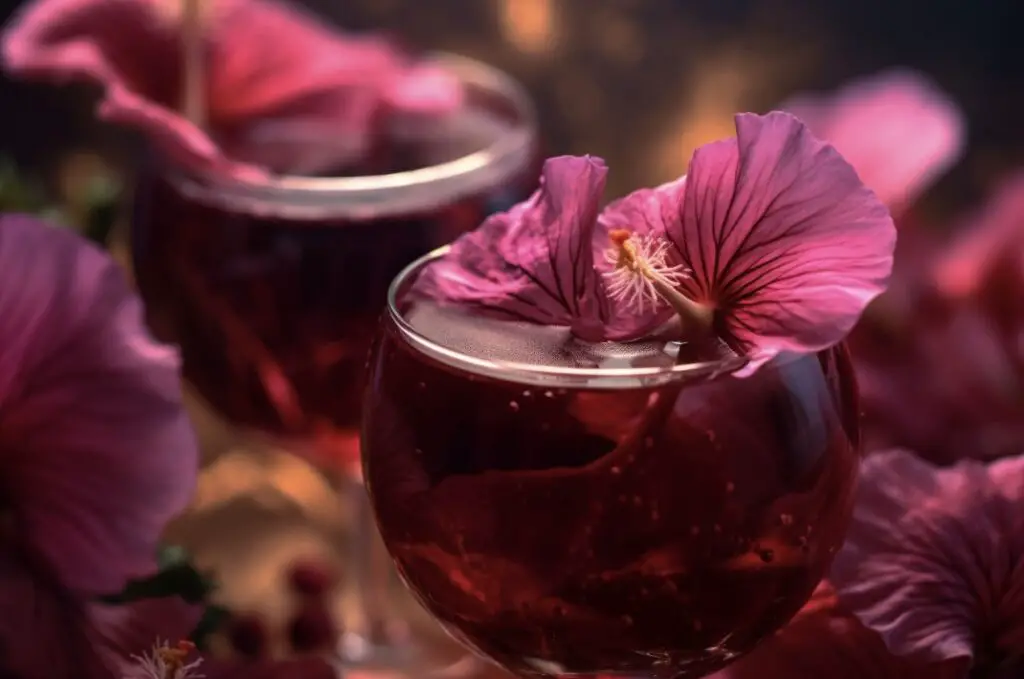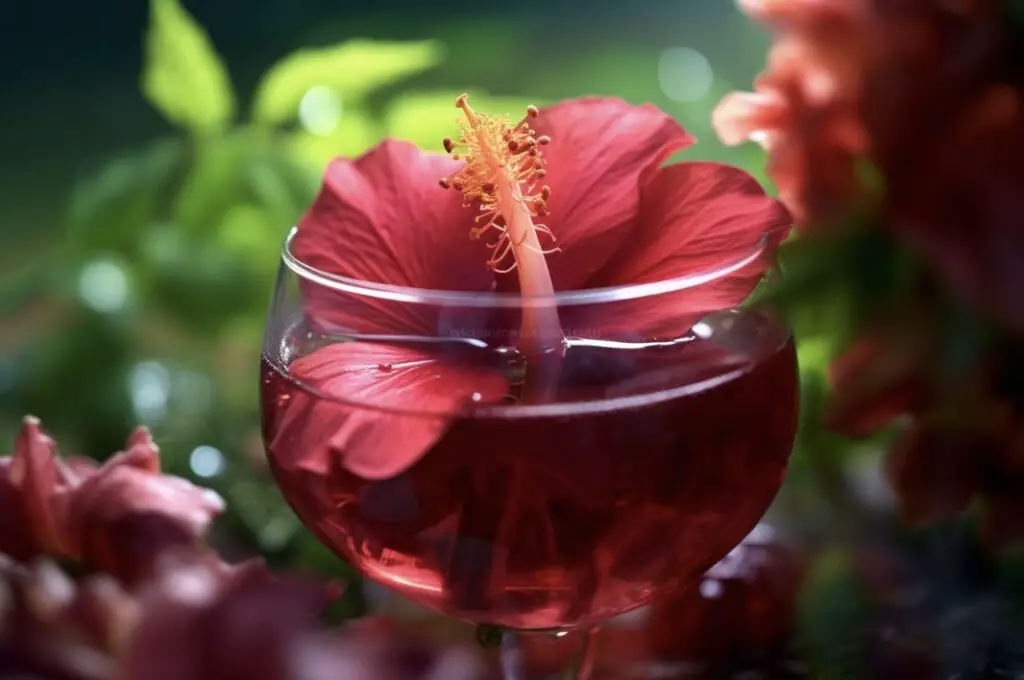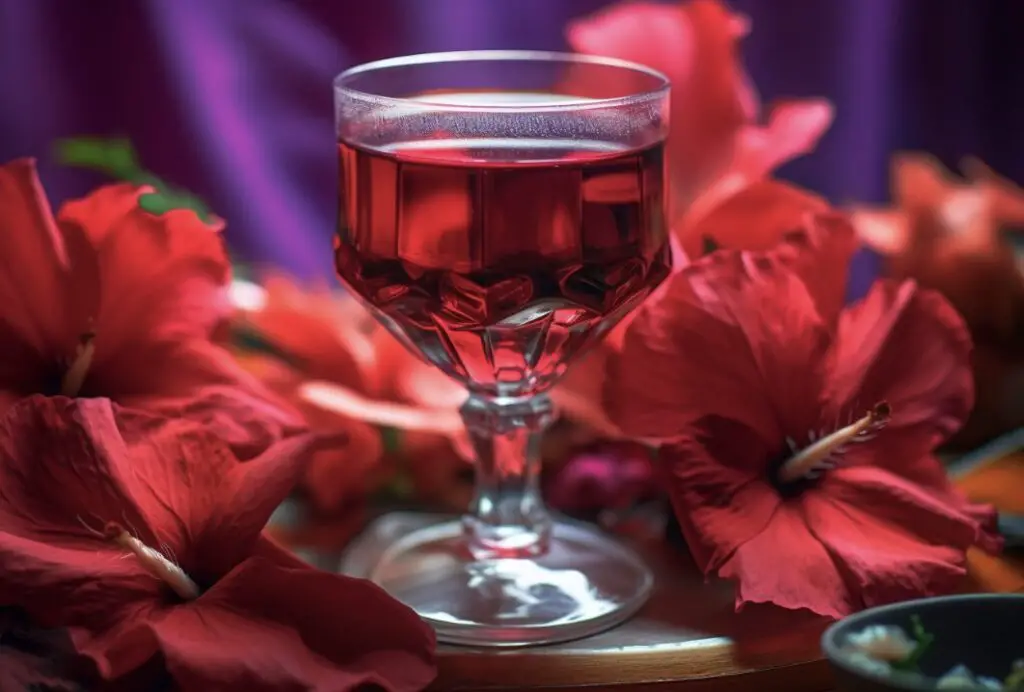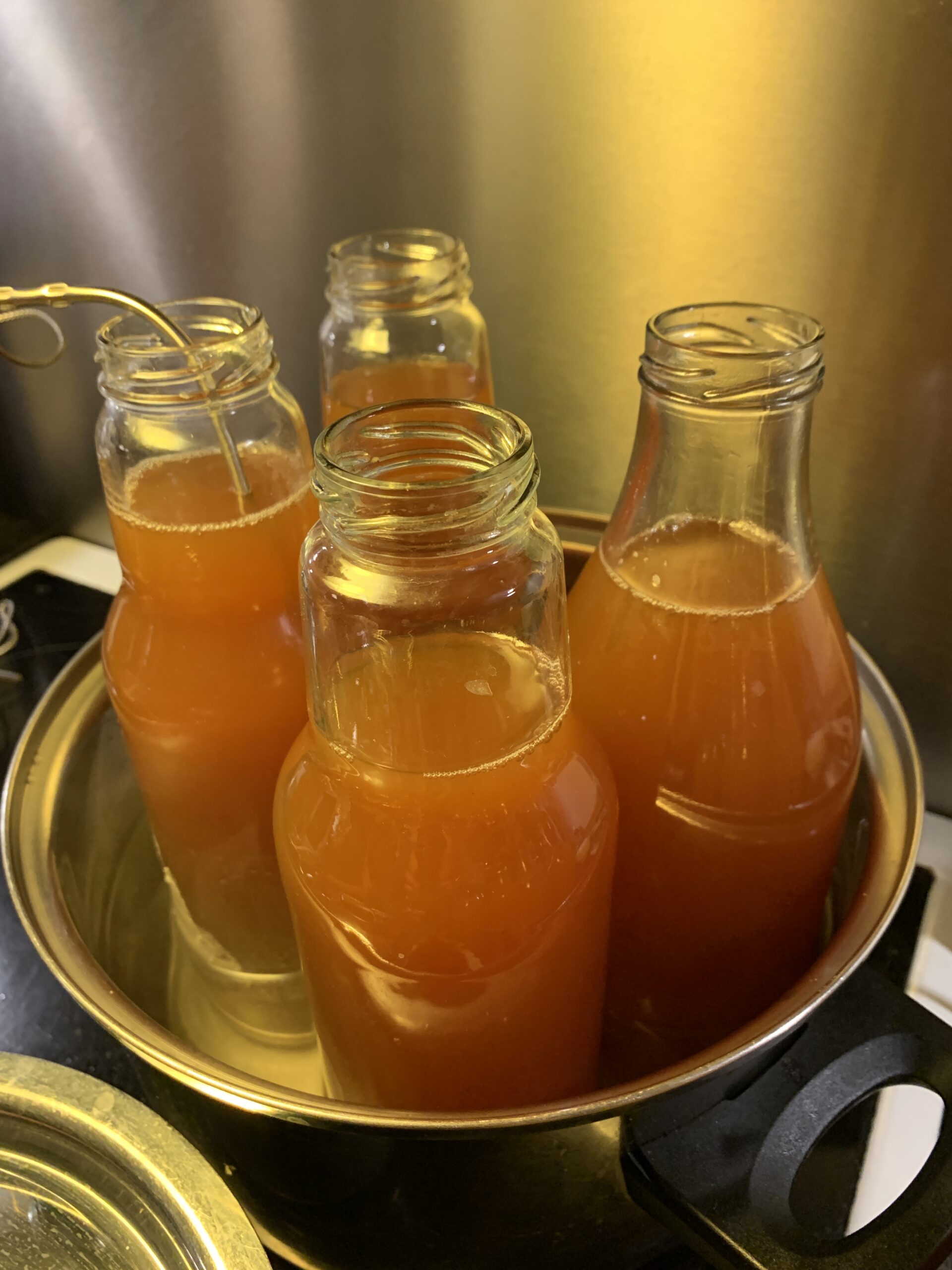As a brewer with years of experience under my belt, I’ve experimented with various ingredients and techniques to create unique and delicious wines. One ingredient that has always intrigued me is hibiscus. Known for its vibrant color and tart flavor, hibiscus is often used in teas and other beverages. But can you make hibiscus wine? The answer is a resounding yes!
Not only is it possible to make hibiscus wine, but the process is also relatively simple and the end result is a delightful, refreshing drink that’s perfect for a warm summer day.
In this blog post, I’ll walk you through the process of making hibiscus wine, sharing my personal experiences and tips along the way. We’ll cover everything from selecting the right hibiscus flowers and preparing the ingredients to fermenting and aging the wine. So let’s dive in!

1. Choosing the Right Hibiscus Flowers
The first step in making hibiscus wine is selecting the right flowers. There are many different types of hibiscus, but the most commonly used variety for wine-making is Hibiscus sabdariffa, also known as Roselle or Florida Cranberry.

This variety is preferred because it has a tangy, cranberry-like taste that lends itself well to wine.
When choosing hibiscus flowers, make sure to select ones that are fresh and free of any signs of mold or decay. You can find fresh hibiscus flowers at some farmer’s markets, or you can grow your own if you have a green thumb.
2. Preparing the Hibiscus Flowers
Once you have your hibiscus flowers, you’ll need to prepare them for wine-making. This involves removing the calyx (the fleshy outer part of the flower) and discarding the seeds and inner parts of the flower.
To do this, simply use a sharp knife to cut around the base of the calyx and remove it from the rest of the flower.
After you’ve removed the calyxes, give them a thorough rinse under cold water to remove any dirt or debris. Then, you’ll need to chop the calyxes into smaller pieces to help release their flavors and color during the wine-making process.
3. Creating the Hibiscus Juice
Now that your hibiscus flowers are prepared, it’s time to extract their “juice” or taste extract. To do this, place the chopped calyxes in a large pot and cover them with water. Bring the water to a boil, then reduce the heat and let the mixture simmer for about 30 minutes.

After the mixture has simmered, strain the liquid through a fine mesh strainer or cheesecloth, pressing on the solids to extract as much juice as possible.
The resulting liquid is your hibiscus extract, which will serve as the base for your hibiscus wine.
4. Mixing the Wine Ingredients
In addition to the hibiscus juice, you’ll also need a few other ingredients to make your wine. These typically include sugar, water, lemon or lime juice, and wine yeast.
The exact quantities of each ingredient will depend on your personal taste preferences and the amount of hibiscus juice you’ve extracted, so feel free to experiment to find the perfect balance for your wine.
To mix the ingredients, combine the hibiscus juice, sugar, and water in a large fermentation vessel (such as a glass carboy or food-grade plastic bucket). Stir until the sugar has dissolved, then add the lemon or lime juice and wine yeast. Stir everything together and cover the vessel with an airlock to allow gases to escape during fermentation.
5. Fermenting the Wine
Now that your wine ingredients are mixed, it’s time to let the magic of fermentation begin. This process typically takes anywhere from one to three weeks, depending on factors such as temperature and yeast activity.
During fermentation, it’s important to monitor the progress of your wine and make any necessary adjustments. This may involve stirring the mixture occasionally to ensure even fermentation, or adding additional sugar if the wine becomes too dry for your taste.
6. Racking the Wine
Once fermentation has slowed down or stopped, it’s time to rack the wine. Racking is the process of transferring the wine from one vessel to another, leaving behind any sediment that has settled at the bottom.
To rack your hibiscus wine, use a siphon to transfer the clear liquid into a clean fermentation vessel, being careful not to disturb the sediment. Once the transfer is complete, reattach the airlock and let the wine continue to age and clarify.
7. Aging the Wine
Hibiscus wine, like most wines, benefits from a period of aging to allow the flavors and aromas to fully develop.

The length of time you choose to age your wine will depend on your personal taste preferences, but a general guideline is to let the wine age for at least three to six months.
During this time, you may need to rack the wine a few more times to further clarify it and remove any remaining sediment.
8. Bottling the Wine
Once your hibiscus wine has reached the desired level of clarity and flavor, it’s time to bottle it. To do this, use a siphon to transfer the wine into clean, sanitized wine bottles, leaving about an inch of headspace at the top. Then, cork the bottles and store them in a cool, dark place to continue aging.
9. Enjoying Your Hibiscus Wine
After all your hard work and patience, it’s finally time to enjoy your homemade hibiscus wine! To fully appreciate the flavors and aromas, serve the wine chilled and pair it with light, summery dishes like salads or grilled seafood.
In conclusion, not only is it possible to make hibiscus wine, but the process is also relatively simple and results in a delightful, refreshing beverage. To recap, here are 10 facts about hibiscus wine:
1. Hibiscus wine is made from the calyxes of the _Hibiscus sabdariffa_ flower.
2. The wine has a tangy, cranberry-like flavor.
3. Fresh, high-quality flowers are essential for making hibiscus wine.
4. The calyxes must be chopped and boiled to extract their juice.
5. Additional ingredients like sugar, water, lemon or lime juice, and wine yeast are needed to make the wine.
6. Fermentation typically takes one to three weeks.
7. Racking helps to clarify the wine and remove sediment.
8. Aging the wine for three to six months helps to develop its flavors and aromas.
9. Bottling the wine allows it to continue aging and developing.
10. Hibiscus wine is best enjoyed chilled and paired with light, summery dishes.
FAQs
Can hibiscus turn into wine?
Yes, hibiscus can be used to make wine. The petals of the hibiscus flower are rich in acids and antioxidants, which make them a popular ingredient in many alcoholic beverages, including wine. The process of making hibiscus wine involves fermenting hibiscus petals with sugar and yeast. The resulting wine is usually tart and fruity, with a deep red color.
What does hibiscus wine taste like?
Hibiscus wine has a tart, fruity taste with floral notes and a slightly sweet finish.
How do you ferment hibiscus wine?
To ferment hibiscus wine, you will need to steep dried hibiscus flowers in boiling water, add sugar and yeast, and let it ferment for several weeks. The mixture should be stirred daily and kept in a cool, dark place until the fermentation process is complete. Once finished, the wine can be bottled and aged for several months to improve its flavor.
Can you make wine out of hibiscus flowers?
Yes, you can make wine out of hibiscus flowers. The flowers are rich in acids and sugars that can be fermented to produce a delicious and unique wine. However, it is important to follow a proper recipe and use the right equipment to ensure the best results.
How do you make hibiscus wine at home?
To make hibiscus wine at home, you will need hibiscus flowers, sugar, water, wine yeast, and a fermentation vessel. Boil the flowers, sugar, and water together, let it cool, add wine yeast, and let it ferment for several weeks. Strain the mixture, transfer it to a bottle, and let it age for a few months before enjoying.
What is the best yeast for hibiscus wine?
The best yeast for hibiscus wine is Lalvin EC-1118, which is a highly tolerant yeast that can ferment in a wide range of temperatures and pH levels, producing a clean and crisp wine with a fruity aroma.




